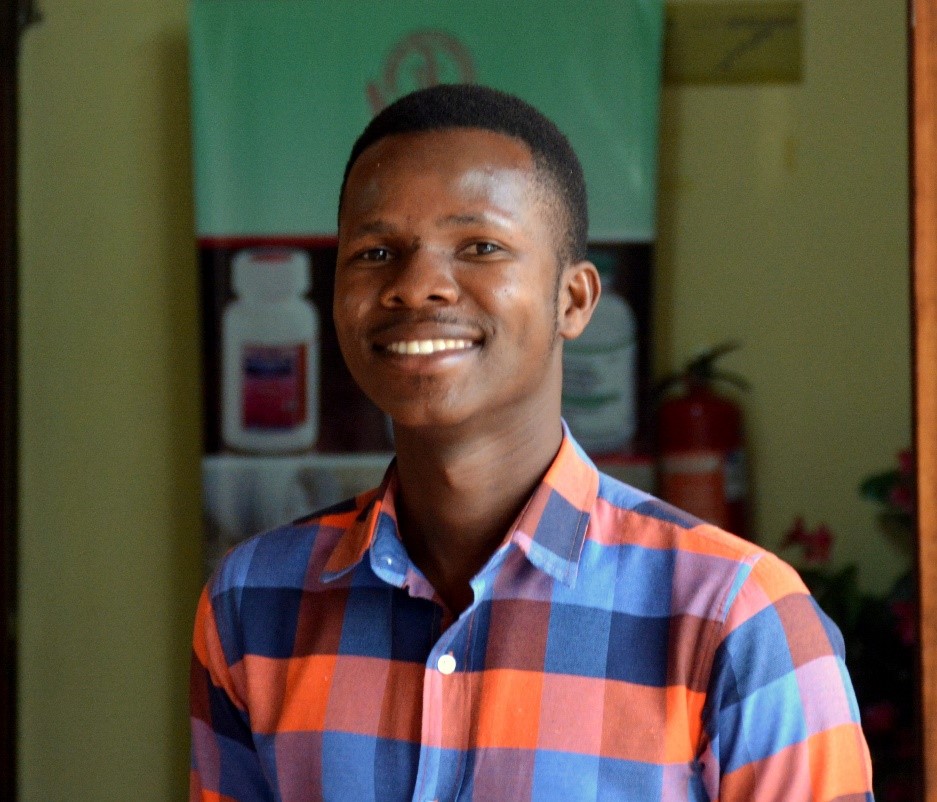
27 Nov Tracking is Half the Battle: Providing Continuous Care for HIV Clients in Malawi

Michael Phiri is the communications and resource mobilization officer for the Christian Health Association of Malawi. HRH2030 works with CHAM in our Malawi activity.
Mark Chiipanthenga, antiretroviral treatment (ART) services coordinator at Mlale Community Mission Hospital, has a vital role to play in attaining epidemic control. Working at a facility run by the Christian Health Association of Malawi (CHAM), serving a population of about 23,970 outside of the capital city of Lilongwe, Mark’s daily goals are clear:
“No client should miss drug refilling day and every client who has tested HIV positive should be started on ART immediately whenever possible.”
Malawi is home to approximately 1 million people living with HIV. The nation’s HIV prevalence is one of the highest in the world. Mark is one of the reasons Malawi is on track to achieve the 90-90-90 global HIV targets — where 90 percent of people infected with HIV know their HIV status, 90 percent of people diagnosed with HIV are on antiretroviral treatment, and 90 percent of those who receive antiretroviral treatment are virally suppressed.
In December 2017, Mlale Community Mission Hospital had 1,031 clients on ART, with one clinician — either a medical assistant or a clinical officer — and one nurse serving an average of 45 clients during weekly ART clinics. The ART department experienced significant capacity challenges due to an insufficient number of health workers. In January 2018, Mark was one of five health workers recruited by USAID’s HRH2030 program, supported by the President’s Emergency Plan for AIDS Relief (PEPFAR), to work at CHAM’s Mlale facility. Mark and his colleagues are changing ART services for the better.
“Clients used to stay the whole day without being attended to, and most of the clients moved to the nearest health facility,” Mark notes. It was often the case that viral-load sample results could not be properly followed-up on; there were not enough ART providers to track clients who tested positive or to provide timely dosing of medication.
With the arrival of PEPFAR-supported health workers in Malawi’s Lilongwe and Zomba districts — as well as new treatment policies and other interventions — health facilities providing adult antiretroviral therapy and viral load monitoring increased their frequency of ART services to at least 5 times per week by nearly 40 percent (from 29 to 40 sites). Mlale Hospital was able to introduce a daily ART clinic to improve access to and continuity of quality care. As a result, the number of ART clients seen in a week at Mlale has increased from 50 to 179 since January 2018. Client exit interviews noted that nearly half of patients surveyed also reported reduced waiting time.
Mark and his colleagues have not been fazed by this growth but have instead transformed the delivery of ART services. With help from the USAID/PEPFAR implementation partner Partners in Hope, the facility introduced a referral and defaulter tracing system. Mark explains, “At Mlale Hospital, we are now able to link people living with HIV to the ART clinic with the aim of reducing the default rate.” Mark and his colleagues monitor people living with HIV and use the defaulter tracing system to trace (track) individuals who may have started on ART but have failed to continue, known as defaulters. According to Mark, “Patients are assisted in a timely manner and are being followed up.” By regularly tracing defaulters and following up or providing reminders, Mark and his colleagues are working to improve the retention of clients on antiretroviral therapy.
CHAM Acting Executive Director Dr. Titha Dzowela says that CHAM is delighted to see the positive impact the additional health workers have brought to the provision of HIV/AIDS services. He notes, “It is encouraging to see how committed and hard working the PEPFAR-supported health workers are in improving every aspect of HIV/AIDS services, from improving quality of the services for the clients, to reducing the workload brought in by HIV/AIDS in the sites where they are working. CHAM, in collaboration with its partners, will continue to strive for continuous quality improvement in HIV/AIDS services through capacity building and mentorship of the health workers to achieve epidemic control.”
To date, HRH2030 and PEPFAR have partnered with CHAM to deploy 82 health workers in target facilities in Lilongwe and Zomba to provide the human resources for health necessary to achieve HIV epidemic control.
CHAM is a membership organization that coordinates 190 health facilities across Malawi. The organization provides approximately 40 percent of the nation’s health services and trains approximately 80 percent of mid-level health workers (skilled frontline and facility health workers including lab technicians and pharmacy assistants). CHAM facilities are located predominantly in rural and hard-to-reach areas thereby promoting equity in access to health care.
Photo: Mark Chiipanthenga, ART services coordinator, at work at Mlale Community Mission Hospital. Credit: Michael Phiri for HRH2030.





